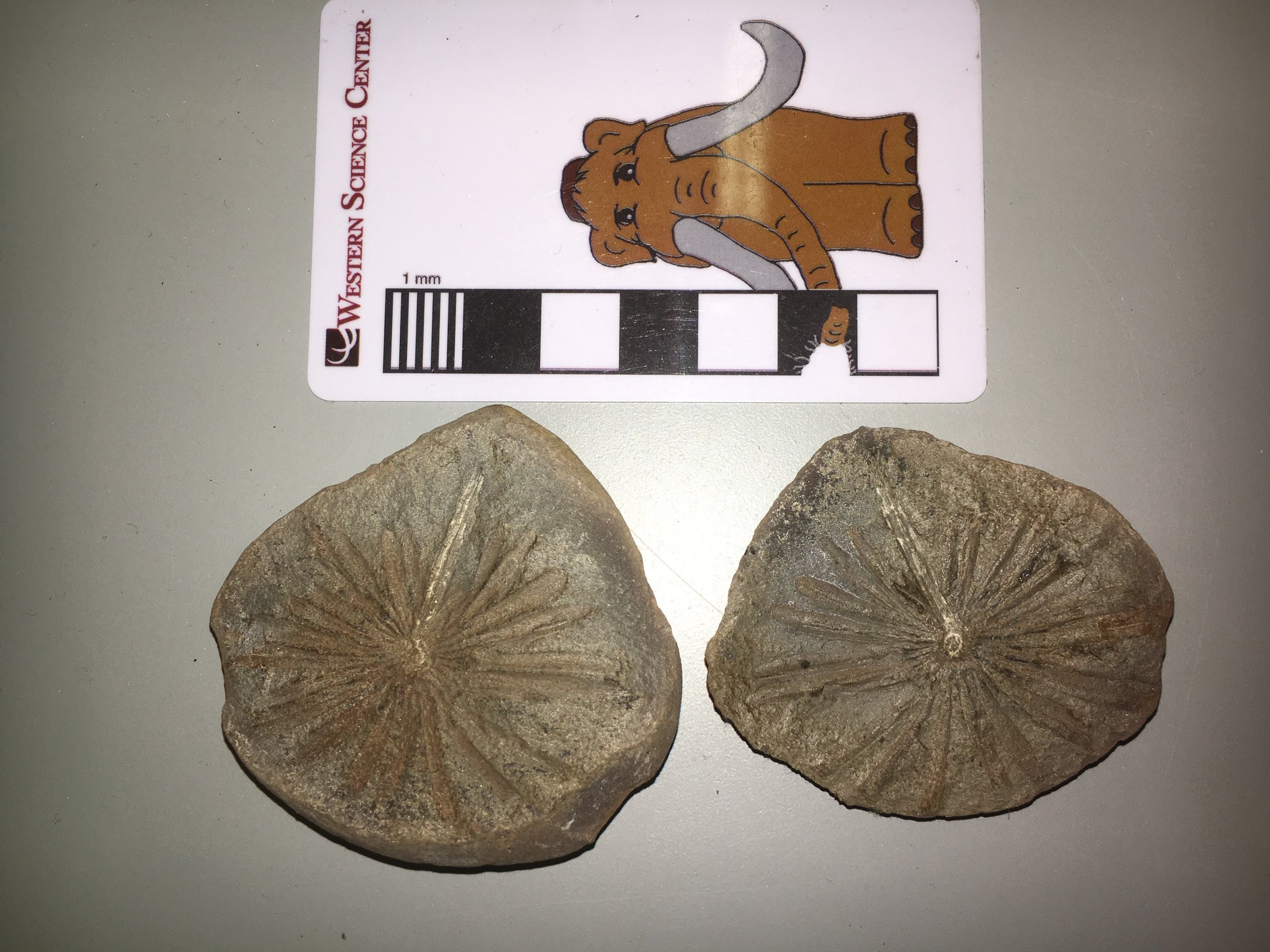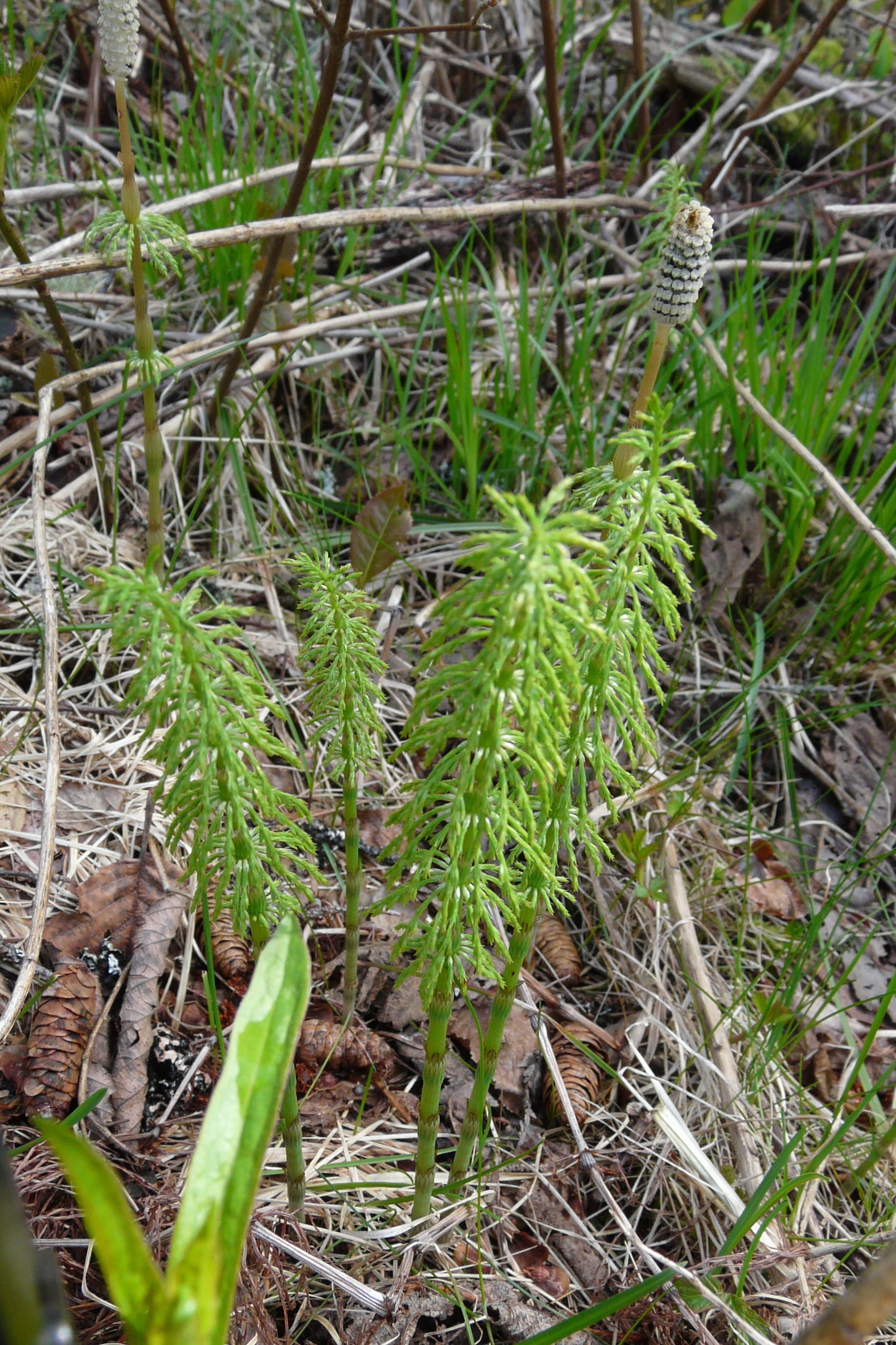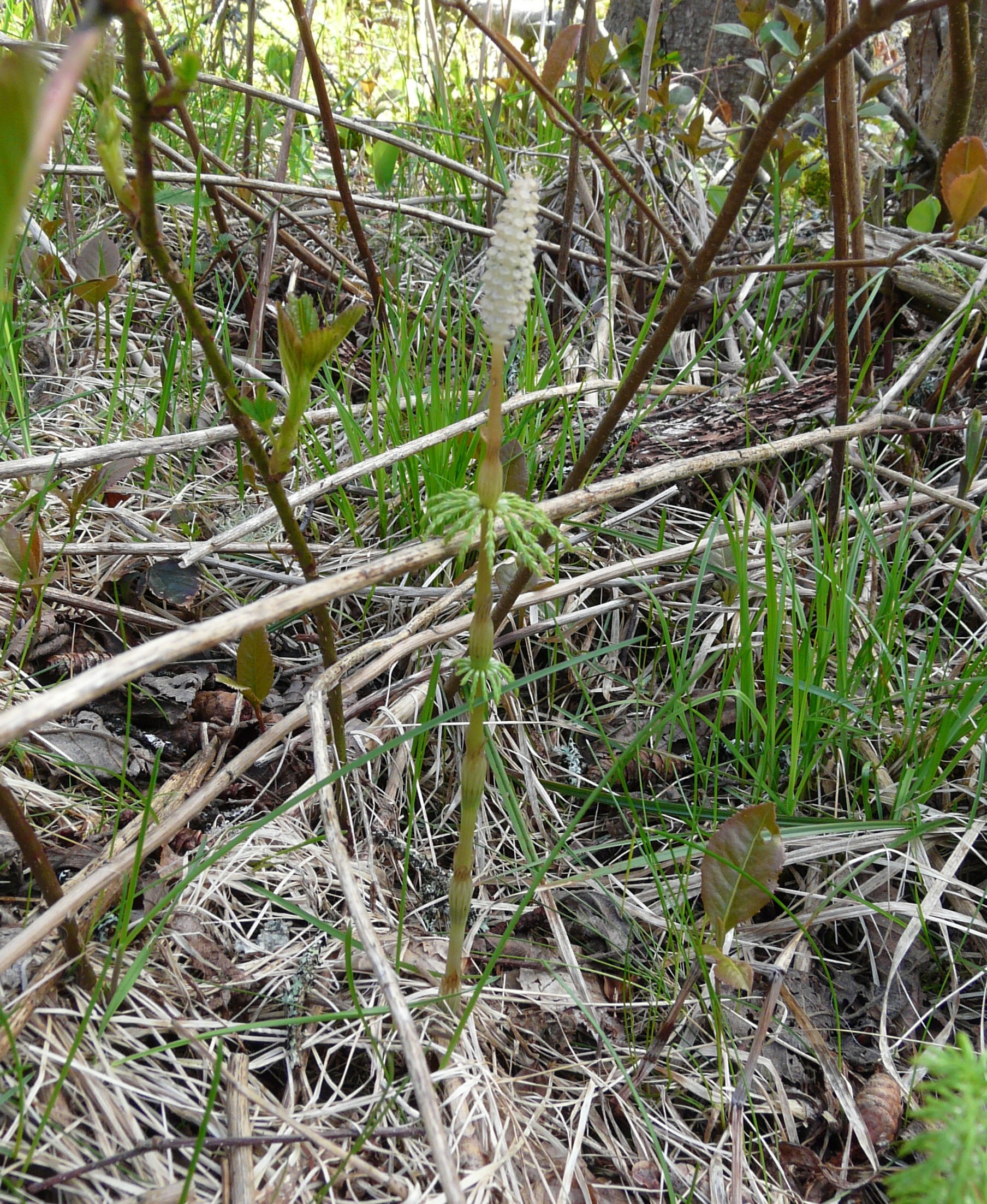 I've spent the last week trying to catch up on administrative work while pouring over all the data we gathered during our "Mastodons of Unusual Size" road trip. But after several weeks of almost all mastodons it gives me the chance to feature a different organism for Fossil Friday. The specimen shown above was donated to the Western Science Center by the Earlham College Geology Department, and comes from the famous Carboniferous Period deposits at Mazon Creek in Illinois. While this looks somewhat like a flower, it's actually a whorl of leaves known as Annularia (flowers had not yet evolved in the Carboniferous). Annularia are the leaves of horsetails or scouring rushes, a plant that's still around as the genus Equisetum:
I've spent the last week trying to catch up on administrative work while pouring over all the data we gathered during our "Mastodons of Unusual Size" road trip. But after several weeks of almost all mastodons it gives me the chance to feature a different organism for Fossil Friday. The specimen shown above was donated to the Western Science Center by the Earlham College Geology Department, and comes from the famous Carboniferous Period deposits at Mazon Creek in Illinois. While this looks somewhat like a flower, it's actually a whorl of leaves known as Annularia (flowers had not yet evolved in the Carboniferous). Annularia are the leaves of horsetails or scouring rushes, a plant that's still around as the genus Equisetum:
 Modern horsetails are small, spore-bearing plants that live primarily in marshy areas. But in the Carboniferous there were giant horsetails that grew to be up to 10 meters tall, and were among the world's most common trees.The name Annularia illustrates a particular difficulty faced by paleobotanists. If you're trying to identify a fossil vertebrate, you face several difficulties related to variability. Bones from different parts of the body look different, and they also vary with age (ontogenetic variation) and sex (sexual dimorphism). Plants present all these same issues, but they may also only grow some structures at certain times of the year (flowers, seeds, spores, pollen), the body parts may easily or even intentionally separate from the rest of the plant (deciduous leaves, seeds, spores, pollen), and preservation potential may be wildly different from one part to another. The result is that, if you have a bunch of fossil leaves and fossil stems, it's often very difficult to tell which ones go together unless that happen to be preserved actually connected to one another. Paleobotanists get around this problem by naming form taxa or organ taxa. The name Annularia specifically refers to leaf whorls of horsetails that share a particular morphology. Other parts of the plant, such as the stems and the spore cones, have different names. Fossil horsetails are quite common and well-known in Carboniferous rocks, so we actually know that fossil stems called Calamites come from the same plants that produce Annularia.
Modern horsetails are small, spore-bearing plants that live primarily in marshy areas. But in the Carboniferous there were giant horsetails that grew to be up to 10 meters tall, and were among the world's most common trees.The name Annularia illustrates a particular difficulty faced by paleobotanists. If you're trying to identify a fossil vertebrate, you face several difficulties related to variability. Bones from different parts of the body look different, and they also vary with age (ontogenetic variation) and sex (sexual dimorphism). Plants present all these same issues, but they may also only grow some structures at certain times of the year (flowers, seeds, spores, pollen), the body parts may easily or even intentionally separate from the rest of the plant (deciduous leaves, seeds, spores, pollen), and preservation potential may be wildly different from one part to another. The result is that, if you have a bunch of fossil leaves and fossil stems, it's often very difficult to tell which ones go together unless that happen to be preserved actually connected to one another. Paleobotanists get around this problem by naming form taxa or organ taxa. The name Annularia specifically refers to leaf whorls of horsetails that share a particular morphology. Other parts of the plant, such as the stems and the spore cones, have different names. Fossil horsetails are quite common and well-known in Carboniferous rocks, so we actually know that fossil stems called Calamites come from the same plants that produce Annularia.
